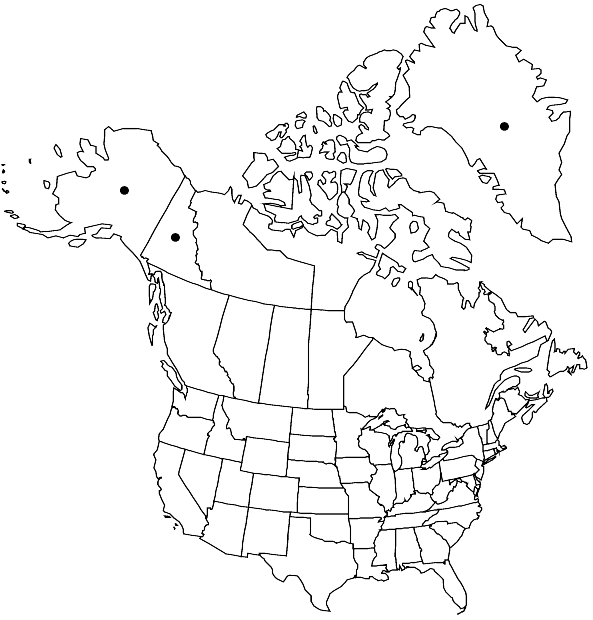Coscinodon hartzii
Meddel. Grønland 15: 422, figs. 1–8. 1897,.
Plants 10–15 mm, pale olivaceous. Leaves oval to ovate-lanceolate, 1.1–1.6 × 0.3–0.6 mm, margins incurved distally, apex plane, awn 0.1–0.6 mm, lamina 2-plicate, plications never extended to base; basal juxtacostal laminal cells short- to long-rectangular, 21–55 × 9–12 µm, evenly thick-walled; basal marginal laminal cells quadrate to long-rectangular, 12–51 × 9–15 µm, thin or thick end walls and thin lateral walls; medial laminal cells 1-stratose; distal laminal cells 2–3-stratose. Sexual condition dioicous. Seta 1.5–1.8 mm. Capsule exserted, cylindrical; peristome present, cribrose, xerocastique.
Habitat: Shale, slate, and granitic rock in tundra
Elevation: moderate to high elevations (1000-1700 m)
Distribution

Greenland, Yukon, Alaska.
Discussion
Coscinodon hartzii is endemic to arctic regions of North America. Until 1992, it was known only from its type locality at Scoresby Sound in eastern Greenland. B. M. Murray (1992) reported collections from Mt. Michelson and the Philip Smith Mountains of Alaska. W. C. Steere’s (1978) and J. Muñoz’s (1998c) citations of C. calyptratus from those sites have turned out to be C. hartzii. A new location in southeastern Yukon suggests that this species may be widespread across northern North America. Coscinodon hartzii is recognized by its weakly 2-plicate leaves coupled with an exserted capsule and cribrose peristome. It commonly also has 3-stratose regions in the distal parts of its stem leaves.
Selected References
None.